1. Site Detection and Mapping
AI is increasingly used to scan vast areas via satellite imagery and LiDAR to pinpoint potential archaeological sites. By detecting subtle patterns or anomalies in the landscape that human eyes might miss, machine learning models can greatly speed up the discovery of sites. This allows archaeologists to focus on the most promising locations, saving time and resources. The approach is collaborative: AI quickly flags possible sites, and then experts verify them on the ground, integrating human judgment with computational power in site identification.
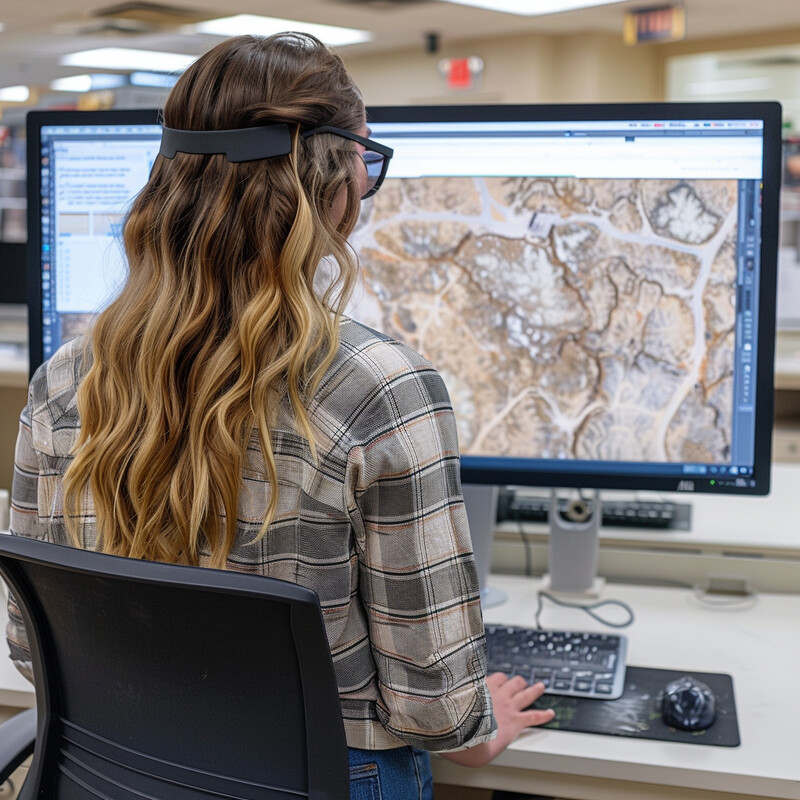
In a 2025 study, researchers trained a deep learning model (DeepLabV3+) on satellite images to recognize ancient Angkorian reservoirs in Cambodia. The AI achieved an F1-score of up to 45% in ideal conditions – comparable to a trained archaeology student – and could reduce manual mapping work by as much as 90%. By automatically highlighting likely archaeological features in remote sensing data, the system enabled the discovery of previously unknown water structures from the Khmer Empire, demonstrating how AI can vastly accelerate site detection.
2. Artifact Analysis
Artificial intelligence aids in the analysis and classification of artifacts by using computer vision to recognize shapes, materials, and decorative patterns. Instead of sorting artifacts entirely by hand, archaeologists can leverage AI to quickly group pottery shards, lithics, or other finds into types or styles. This not only speeds up the cataloguing process for large collections but also increases consistency in identification. By training on thousands of known examples, AI systems can learn to spot minute differences or similarities that might elude a human, assisting researchers in interpreting artifact assemblages more efficiently.
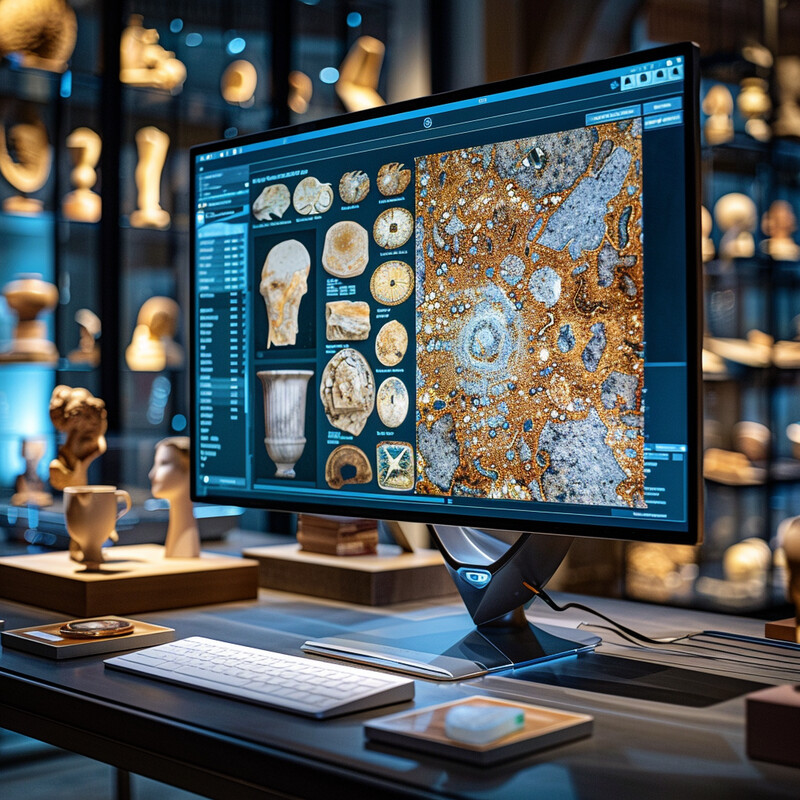
A 2024 study applied deep learning to microscopic images of ancient ceramics to determine their origin. The ensemble AI model achieved roughly 96% precision and recall in classifying pottery pieces by their production source. In practical terms, the AI could correctly identify the kiln or region where a pot was made with about 95–96% accuracy, demonstrating near-expert performance in artifact classification. Such results show that AI can reliably analyze subtle texture and composition features of artifacts, augmenting experts’ ability to sort and study items from archaeological collections.
3. Predictive Modeling of Site Locations
AI-driven predictive models analyze environmental and historical data to forecast where undiscovered archaeological sites might lie. By learning patterns from known site locations – such as proximity to water, soil type, or elevation – machine learning algorithms can generate “heat maps” of high-probability areas for finds. This approach helps archaeologists target surveys in vast landscapes more effectively, focusing on spots that fit the profile of past human settlements. Predictive modeling doesn’t replace expert knowledge but rather enhances it, using big data to suggest likely site locations that archaeologists can then investigate in the field.
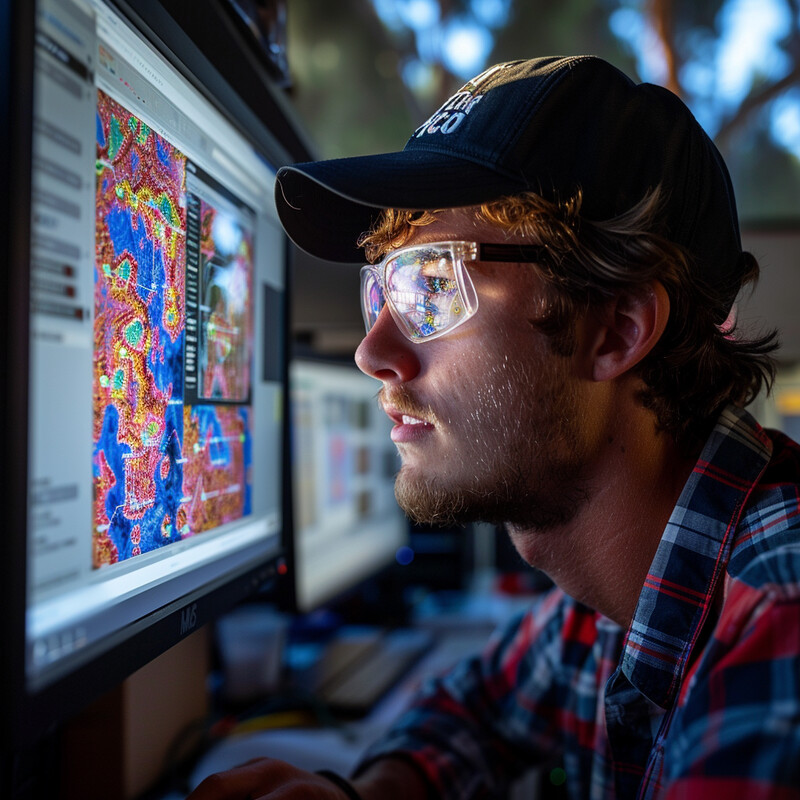
Researchers in 2023 developed a machine learning model to predict archaeological site locations in Japan and China by incorporating factors like terrain and water sources. The best model (a hybrid neural network combined with statistical filters) achieved an Area Under Curve (AUC) of around 0.90 in testing, indicating high accuracy in distinguishing areas with sites from those without. In practice, this AI model successfully highlighted that ancient sites cluster on certain landscapes – for example, in both regions it confirmed that sites tend to lie near water and on moderate slopes rather than flat plains. Such predictive mapping studies show AI’s power to learn non-random patterns in site distribution, guiding archaeologists to promising locations.
4. Restoration of Artifacts
AI is being used to virtually “restore” damaged artifacts and monuments by reconstructing missing pieces or original appearances. Using techniques like generative adversarial networks (GANs), AI can analyze what remains of an object – a faded painting, a broken sculpture, or an eroded artifact – and predict the intact version. This gives historians and the public a glimpse of how artifacts looked in their prime without physically altering them. Such reconstructions must be carefully validated by experts, but they offer valuable visual hypotheses for incomplete artifacts. Overall, AI-powered restoration provides a non-invasive means to aid conservation, education, and research by digitally reversing the effects of time.
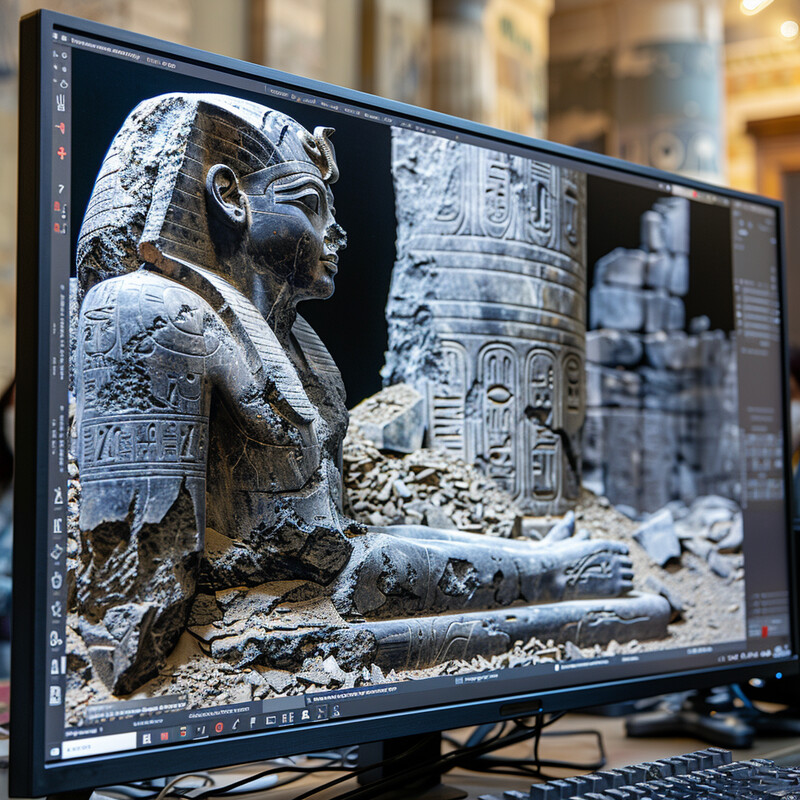
In 2024, scientists applied a generative AI model to enhance and reconstruct images of ancient Roman coins that had suffered heavy wear. The AI “learned” from thousands of well-preserved coins and then restored worn coin images so well that in some cases the results were virtually indistinguishable from originals. The system effectively re-rendered faded inscriptions and portraits on 1,700-year-old coin faces, making them look intact. This experiment demonstrated how AI can fill in missing details of artifacts: for these coins, the algorithm improved legibility and detail, aiding numismatists in reading and identifying features that manual restoration could not easily recover.
5. Deciphering Ancient Texts
AI is proving valuable in the decipherment and translation of ancient writings, especially for scripts and languages that are poorly understood or extinct. Machine learning algorithms can be trained on large corpora of known texts to recognize characters and suggest plausible translations for unknown texts. They excel at detecting patterns in symbols or letters – even if damaged or incomplete – and can match them to known languages or phrases. AI does in seconds what might take human epigraphers weeks, by scanning through dictionaries and prior translations. While human linguists are still crucial to interpret context and meaning, AI tools greatly accelerate the initial reading of ancient inscriptions or tablets, effectively acting as an automated translator for long-lost languages.
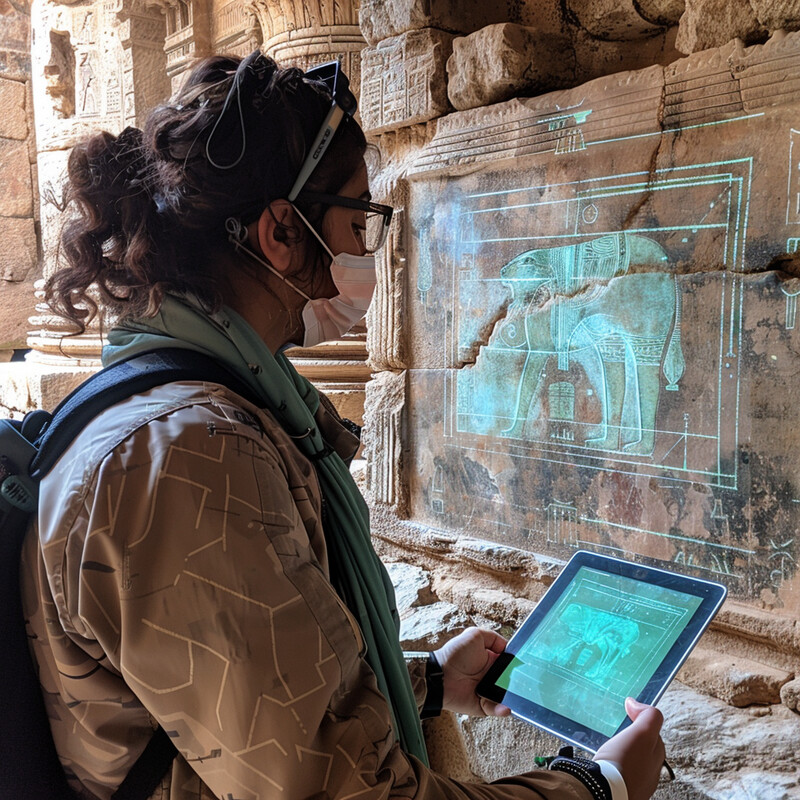
A team from Israel trained a neural translation model in 2023 to convert cuneiform tablets written in Akkadian (a 5,000-year-old language) directly into English. The system was evaluated using a standard metric (BLEU) and scored ≈36.5, whereas human translators typically score around 40–50 on similar tasks. Notably, the AI achieved 97% accuracy at transliterating cuneiform signs into the Latin alphabet (essentially reading the script) before translating. This means the program can render the wedge-shaped cuneiform signs into legible text almost perfectly, and then produce a rough English translation nearly on par with expert Assyriologists. The tool has already been used to instantly translate tens of thousands of digitized clay tablets, a process that previously required scarce specialists and considerable time.
6. 3D Modeling and Simulations
AI technologies assist in creating detailed 3D models of archaeological sites and artifacts, which can be used for virtual reconstructions and simulations. By feeding algorithms with photographs or laser scans, archaeologists can generate digital twins of ruins or objects. These 3D models allow researchers to explore sites as they were in the past, simulate environmental effects, or even digitally test how structures might have looked or functioned. AI improves this process by filling gaps in data; for example, it can infer a 3D shape from partial remains or even from old 2D images. The resulting virtual models are invaluable for public education (through virtual tours) and for scholars to analyze spatial relationships at a site without being physically present.
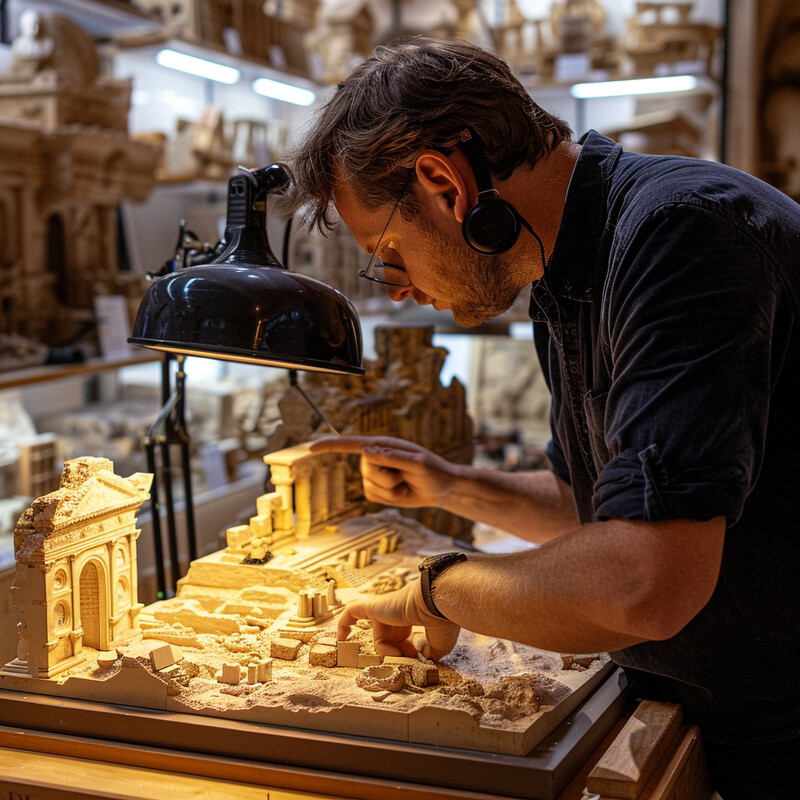
In 2024, researchers demonstrated an AI method that can produce a 3D reconstruction of an artifact from a single old photograph. Using a 134-year-old black-and-white photo of a now-hidden temple relief at Borobudur (Indonesia), their neural network generated a three-dimensional digital model of the relief. The AI effectively “lifted” the scene out of the photograph, recreating depth for features like carved figures and backgrounds that had long been covered by restoration work. This proof-of-concept shows how AI-driven 3D modeling can recover the form of artifacts or structures that no longer exist in view, enabling archaeologists to examine and even virtually restore heritage that is inaccessible or lost.
7. Temporal Analysis
AI tools help archaeologists analyze the chronological sequence of artifacts and site layers, refining our understanding of timelines. By examining patterns in stratigraphy (the layers of soil deposits) or in artifact styles over time, machine learning can assist in dating finds and correlating layers across different areas of a site. For example, AI can detect subtle changes in pottery style progression or in sediment composition that indicate different time periods. Additionally, AI algorithms can integrate large datasets of radiocarbon dates, artifact typologies, and stratigraphic diagrams to model a site’s occupation history. In essence, AI acts as a sophisticated statistical assistant, finding order in complex temporal data and helping archaeologists build more precise chronologies of past human activity.
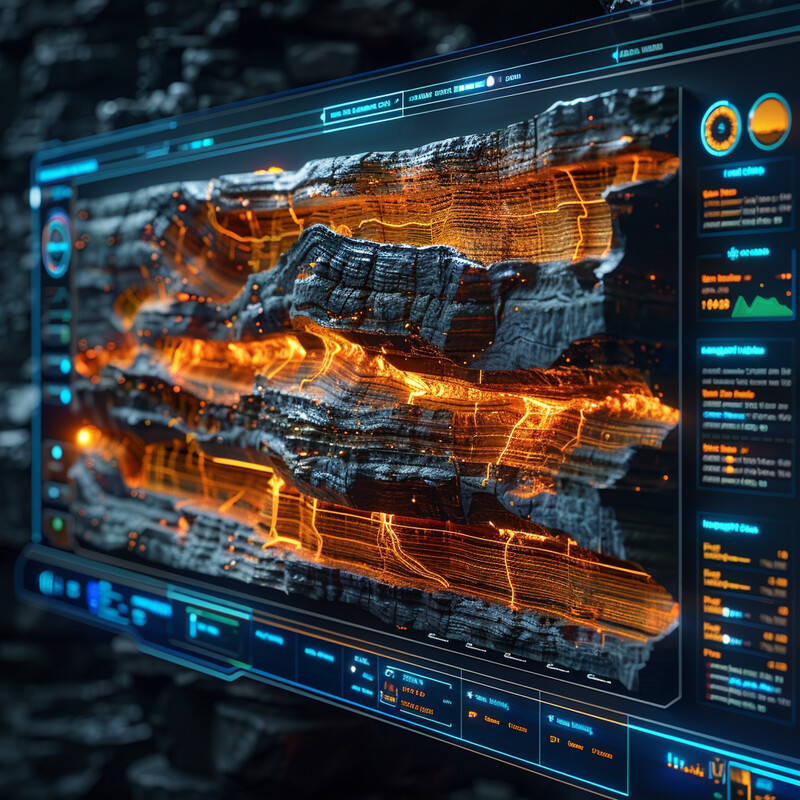
A 2024 study used deep neural networks to automatically estimate the age (archaeological period) of artifacts based on their images. The researchers trained the model on over 10,000 artifact photos spanning 16 defined periods from the Paleolithic to Late Islamic times. In tests, the AI’s top-5 accuracy (likelihood that the correct period was among its five highest guesses) exceeded 90%. In other words, the system could correctly place an artifact into its right general era (e.g. Bronze Age, Iron Age, etc.) with high reliability, approaching the success rate of veteran archaeologists. Such performance underscores how AI can assist in temporal classification; by recognizing diagnostic features (like tool shapes or decoration styles) it provides quick initial dating suggestions that experts can then refine.
8. Analysis of Human Remains
AI is being applied in bioarchaeology to extract more information from human skeletal remains. By training on medical and forensic datasets, AI can learn to determine characteristics like age-at-death, biological sex, stature, or even ancestry from bone measurements or scans. It can also assist in detecting signs of ancient diseases or dietary deficiencies by recognizing patterns in skeletal lesions or tooth wear. These algorithms augment the work of osteologists by providing quick, objective initial assessments – for instance, scanning a skull to predict sex – which can then be confirmed by experts. The result is a more efficient analysis of burials and human remains, leading to richer insights into past populations’ health, diet, and demographics.
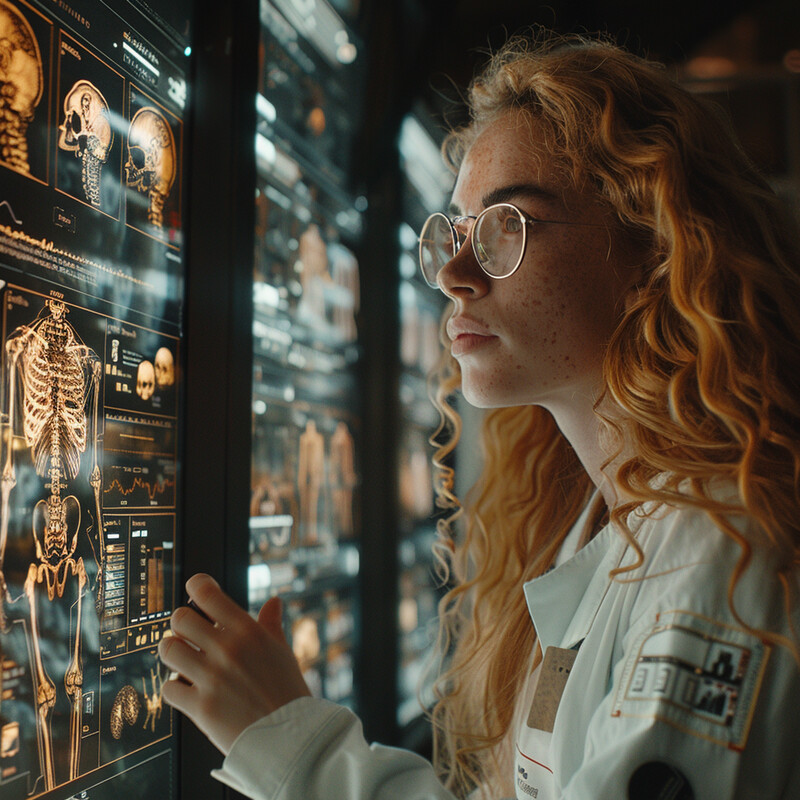
A recent AI tool has achieved remarkable accuracy in assessing skeletal remains. In a 2024 study, a deep learning model was trained on 3D CT scans of skulls and correctly determined the biological sex in 97% of cases, compared to about 82% accuracy for experienced human osteologists. The model was not only more accurate but also about five times faster than a person at evaluating key cranial features. This high precision means that, for example, by analyzing a digitized skull from an archaeological dig, the AI can rapidly identify it as male or female with minimal error. Such systems, extended to other bones or traits, are poised to assist archaeologists in constructing profiles of ancient individuals (age, sex, stature) with greater speed and consistency.
9. Remote Sensing Data Analysis
Modern archaeology often relies on remote sensing technologies – such as aerial photography, LiDAR, radar, and satellite imagery – to detect buried structures and landscape modifications. AI greatly enhances the analysis of these massive datasets by automatically identifying patterns indicating archaeological features (e.g., geometric shapes of ruins, mounds, ancient field systems) that might be invisible at ground level. For example, AI can scan LiDAR’s 3D point clouds of a jungle and outline rectilinear structures or road networks hidden under vegetation. By doing so, AI turns what would be years of manual image inspection into a much faster, repeatable process. The outcome has been the discovery of “lost” cities and features around the world, as AI-guided remote sensing peels back layers of earth or forest to reveal the human imprints beneath.

One dramatic example comes from the Maya Lowlands: in 2022, researchers used AI-assisted LiDAR analysis to map a vast Preclassic (~1000 B.C.–A.D. 150) Maya civilization in northern Guatemala. The LiDAR survey identified over 770 ancient settlements, which archaeologists consolidated into 417 distinct cities, towns, and villages connected by a network of raised causeways totaling about 177 km (110 miles) in length. This hidden landscape, complete with pyramids, plazas, and roadways, had been completely obscured by dense rainforest. AI algorithms helped to filter and interpret the LiDAR data, pinpointing structural outlines beneath the canopy. The discovery redefined the scale of Maya urbanization in that region – a feat only possible by coupling remote sensing with intelligent data processing on an unprecedented scale.
10. Automated Documentation
AI is streamlining the tedious task of documentation during archaeological excavations. Traditionally, archaeologists record every find and feature by hand – noting its location, depth, description, etc. Now, intelligent systems are being introduced to help automate this process. For instance, tablet-based field apps with AI can auto-fill data entries when an artifact is photographed or scanned, or even transcribe spoken observations by archaeologists into structured notes. Some systems use object recognition to identify artifacts on the spot and log their details. By organizing excavation data in real-time and reducing human error, AI-driven documentation ensures more complete and accessible records. This means that the wealth of information from a dig (photos, maps, notes, artifacts) can be systematically captured and linked in a database, often ready for analysis immediately after – or even during – the excavation.
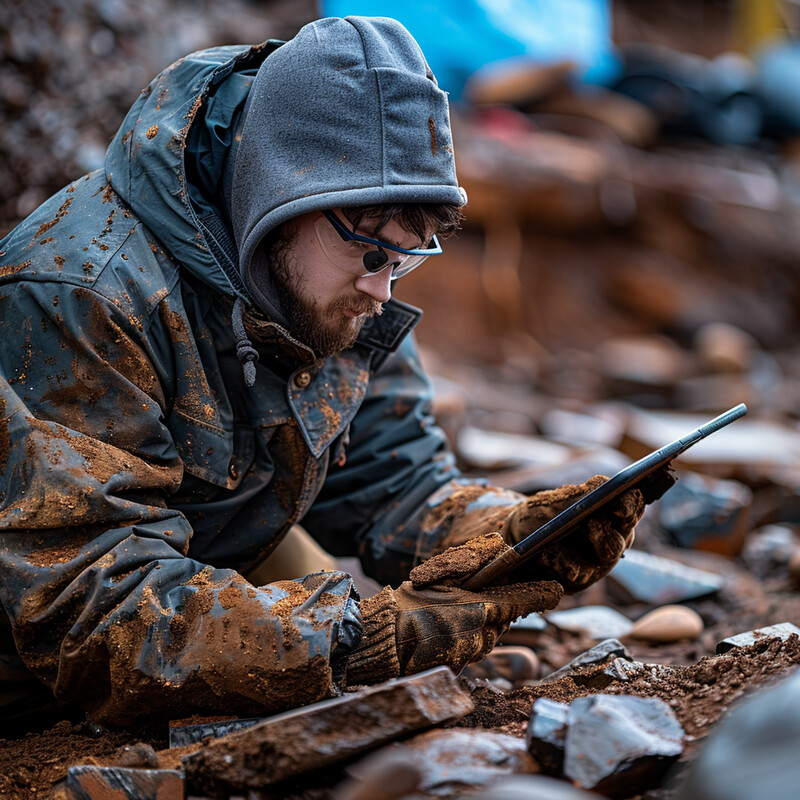
A European project developed an AI-powered application called ArchAIDE to automate pottery identification and recording in the field. Using a single photo of a pottery fragment, the ArchAIDE app’s image-recognition AI can identify the type of ceramic and instantly populate a digital catalog with its attributes. In trials, this tool markedly reduced the time required for archaeologists to classify and document pottery finds, compared to purely manual cataloguing. For example, a task like identifying a Roman amphora shard – which might take an expert several minutes with reference books – can be done in seconds by the app, which then stores the identification, context, and even suggested bibliography in a database. By speeding up artifact logging and minimizing misclassification, such AI-assisted documentation tools help ensure that no data is lost in fast-paced excavations and that researchers can query the information immediately.